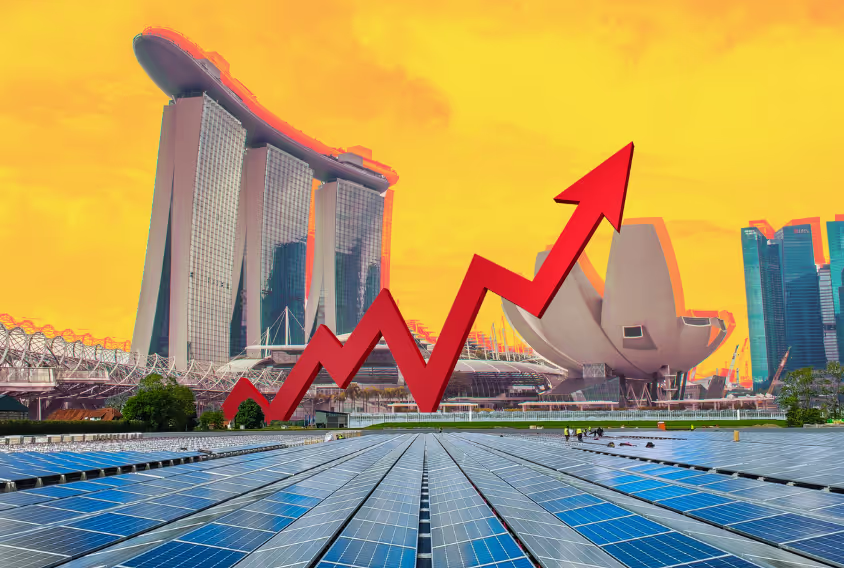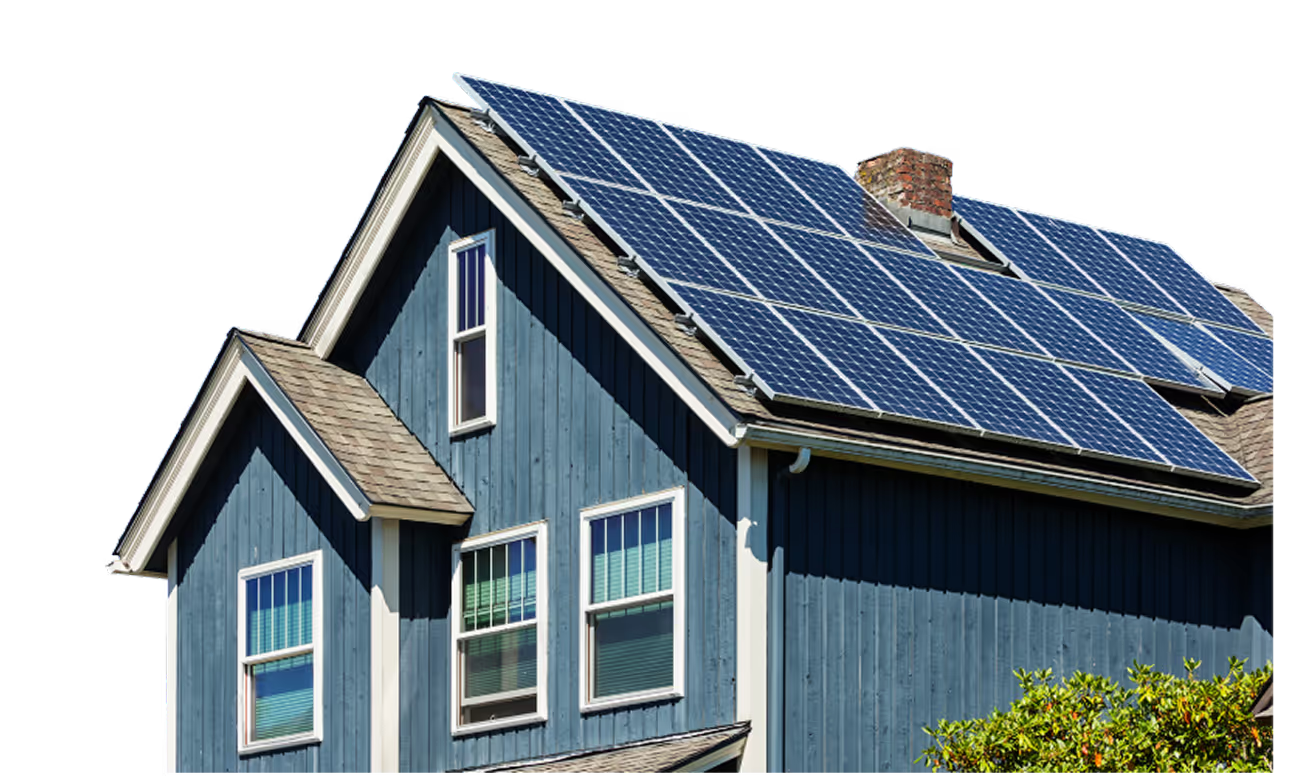
Solar panels — What exactly is the hype surrounding these friends of the environment? With the relentless heatwaves in sunny Singapore, it is no doubt that solar panels have captured the attention and rooftops of many. This comprehensive article will not only uncover the reasons behind this solar sensation but also dive into how it all works.
In Singapore, the push towards sustainability is more than just a trend; it’s a necessity. The popularity of solar panels has skyrocketed, driven by the collective goal to live more sustainably and save money in the process. These panels aren’t just fighting the good fight against climate change; they’re also leveraging Singapore’s sunny disposition to help us meet our clean energy goals. But this shift isn’t only about being green, it’s a savvy move for anyone looking to cut down on energy costs in the long run.
Why Are Singaporeans Considering Installing Solar Panels?
According to the latest sources from EMA, there has been a whopping 7,698 within just the first 6 months of 2023, which is already approximately 16% more than that in 2022 (6,635).
Out of the 7,698 solar panel systems, 38.6% of these were actually residential installations, amounting to about 2,971 in total.
You might be wondering: what made these 2,000 odd people make the crucial decision to install solar panels on their roofs, a high ticket item that can cost $20,000 SGD and up?
Is it just for the environment, or is there more to it than what meets the eye?
Before we begin, we need to first understand what makes solar energy suitable for Singapore and what motivates people to consider installing solar panels. There’s more to this recent trend than it seems, and we believe that there are other motivations at play other than being eco-friendly.
What Are The Benefits Of Installing Solar Panels?
Solar as a technology is popular not only because it’s green, but also because it’s a cheap source of electricity; even cheaper than that of traditional fossil fuels. For every dollar invested in solar panels, there will be a significant slash in both your carbon footprint and utility bills.
Essentially, every dollar you spend turns into a double win, reducing emissions for our city and easing your monthly expenses.
1. Carbon Efficiency In Solar
Electricity generated from solar panels does an amazing job at combating major contributors to global warming, such as coal, oil and natural gases.
By opting for solar, you’re lowering your overall carbon footprint. Using less power from the grid translates to burning less fossil fuel, significantly reducing the amount of carbon polluting our atmosphere.
2. The Affordable Prices Of Solar Panels

From 2009 to 2019, the average price of solar generated electricity has declined by approximately 89%. Most homeowners can expect to spend an average of just $0.15/kWh for household electricity, during the lifetime of the solar panel system, which can last at least 25 years. With such a long lifespan, we’re looking at substantial long-term savings here.
In essence, solar panels bring an affordable solution to your electricity needs all the way to your doorstep, making it an obvious choice for anyone looking to cut costs and enhance their environmental contribution.
3. How Solar Panels Can Increase The Property’s Value
We’ve talked about being cost-efficient and solar panels helping you to save money. Now, let’s talk about earning money.
A comparative analysis done by PropertyGuru, showcased two semi-detached properties with the same layouts and similar sizing. However, the listing price of the property with solar panels had a difference in price. Installing solar panels on your roofs could potentially uplift your property’s value by around 3% to 4%. For the house flippers, installing a solar system on your roof could be the financial cherry on top, sweetening your investment significantly.
In addition, an article from Forbes also mentions that solar panels do more than just lower our electricity bills and give Mother Nature a high five. They also pump up your home’s value. Thanks to a Zillow study, we know homes sporting solar panels fetch about 4% more on the market.
How Do I Pay For Solar?
Ever wondered how we figured out the real cost of powering up homes and businesses with solar panels? Enter the Levelized Cost of Electricity, or LCOE for short. Think of it as the ultimate price tag that tells us how much it costs to generate electricity from other sources.
Traditionally, the appeal of solar energy relies on its Levelized Cost of Electricity (LCOE), a measure that divides the upfront costs of a solar panel system by the total energy it generates over its lifetime.
This formula offers a clearer insight of solar’s economic value, emphasizing its cost-effectiveness when compared to other energy sources. By accounting for the initial cost against long-term energy production, LCOE highlights the decreasing costs and increasing efficiency of solar technology, making it an increasingly attractive option for those seeking a sustainable and financially savvy energy solution.

So, why does LCOE matter? It levels the playing field, allowing us to compare apples to apples when it comes to choosing between solar panels on your roof or sticking with traditional power. In a nutshell, LCOE helps us make financially smarter, more sustainable energy choices by choosing the most cost-effective options out there.
How Does Solar Energy Generation Work?
This brief overview, which includes a simple flowchart, explains the operational cycle of solar panels: capturing daytime energy and noting their utility after the sun sets. Let’s explore the intricacies of this eco-friendly system, showing how it not only lights up our homes but also promises a brighter, greener future.

Phase 1: What Happens In The Day
Soaking up the sun’s rays, this is where the magic happens. Energy generation is at its peak during this period of the cycle. Collected sunlight gets converted into clean usable energy and stored for future uses. It’s like having your own personal power station. With solar panels installed, traditional sources of energy such as petrol or gas won’t be tapped on as often, in turn severely reducing the electricity bills.
Phase 2: What Happens At Night
When the sun sets, the hardworking solar panels take a well-deserved rest, but the benefits continue. Even though they’re not generating power at night, you can rest assured that you won’t be left in the dark. The excess energy produced during the day is either stored in solar batteries for use during the night, or fed back to the grid, where consumers can earn credits through net metering schemes. (However, keep in mind that Solar Batteries are expensive for Singapore’s context, and oftentimes not worth it.)
How Much Do Solar Panels Normally Cost?
With all this talk on the benefits, let’s dive into the costs of owning solar panels now. Given that every house and roof is unique, our talented team has created a handy simulator to help you get a ballpark figure on the cost of owning a solar panel.

Enduring the breakeven period essentially means that a solar panel system effectively covers its own costs. However, for those keen on understanding the specifics and performing their own calculations. Here are the nitty-gritty details:
- Each solar panel will cost approximately $1,000 SGD, inclusive of other costs as well. Alternatively, you can head here to find out more about our solar panel price plans!
- Each panel measures roughly 2 meters by 1 meter, and can crank out about 500 Wp.
A solar panel system has a lifespan of at least 25 years. - Armed with these specs and knowing your roof’s size, you can pretty much figure out the total cost of your setup, the lifetime output you can expect from your panels, and other relevant details.
For quicker estimates, here are some rough prices to guide you:


Financial Incentives For Solar Panels In Singapore
Savings!
The primary element responsible for the rising popularity in solar panels has emerged as a financially savvy decision for homeowners and businesses alike. With Singapore’s sunny climate, the shift to solar isn’t just eco-friendly, it’s an economically sound decision.
The attraction is clear-cut, lower electricity bills and government rebates make the investment in solar panels increasingly appealing. As such, solar energy is transitioning from a niche luxury to a mainstream, cost-effective solution. driving its adoption among those looking to cut costs and support a sustainable future.
The Government’s Thumbs Up
Singapore’s government role in this solar saga is crucial, actively promoting campaigns and sustainable initiatives. Delving into the specifics, the government offers three key schemes that make solar adoption both attractive and feasible.
Net Metering Scheme, which categorizes consumer bases into two; Contestable Consumer, and Non-Contestable Consumer. From this classification, consumers can find out which scheme they are eligible for, the Simplified Credit Treatment (SCT) Scheme, or the Enhanced Central Intermediary (ECI) Scheme, respectively. These terms may seem intimidating, however we have a detailed in-depth guide with visuals to explain each individual scheme.
Renewable Energy Certificates (RECs) provide a chance for both businesses and individuals to actively support solar energy production. Purchasing RECs can contribute to reducing their carbon footprint. This system not only encourages the growth of energy but also allows participants to showcase their commitment to environmental improvement.
💡 Did you know there’s a difference between Carbon Credits and Renewable Energy Certificates? Check out our comprehensive guide where we explain both!
The Financial Incentives for Energy Efficiency light up a path for a greener Singapore. Take the Green Mark Incentive Scheme for Existing Buildings (GMIS-EB 2.0), for example. It’s like a pat on the back (but in cash) for building owners who make their places more eco-friendly. This scheme helps cover some costs of going green. It’s not just about saving the planet; it’s also about saving money in the long run. Owners get to do their bit for the environment and enjoy lower energy bills, a win-win situation.
These initiatives highlight the government’s robust support for solar energy, making it easier and more rewarding for Singaporeans to go green. Interested readers may find additional in-depth information here.
Who Can Install Solar Panels In Singapore?
Like everything, there will most likely be restrictions. For this case, there are a few barriers such as building regulations and restrictions that must meet specific HDB guidelines to ensure safety and structural integrity.
Housing & Development Board (HDB)
As of now, the dream of having solar panels that fit HDB’s may seem far away. Fret not fellow Singaporeans, there is still plenty of hope for the future with the on-going restrictions. That being said, eco-conscious homeowners can still partake in saving the environment by upgrading to a smart green home.
Find out more on enhancing your sustainability here!
Condominium
Condominium residents, on the other hand, have a different kind of restriction, as most of the areas are considered communal living spaces. Fortunately for penthouse owners, the dream of slashed electricity bills and solar powered appliances is not impossible.
However, penthouse owners have to keep in mind that they must seek approval from the condominium’s Management Corporation Strata Title (MCST) before installing the panels. Penthouse owners must take note that they will not be able to export or sell the excess electricity to the grid, and will additionally be liable for risks or damages to the building.
How Unique Customers Thrived With Our Products
From homes to businesses, solar panels are making a big difference. Here are two unique customer stories: Brandon, who finds a solar solution amidst his home repairs, and Kenny, who cut down on his electricity bills after switching to solar power.
Brandon’s Solar Shift
A potentially disastrous situation turned for the better. Brandon discovered a crack in one of the supporting beams in his house, which led him to replace the heavy roof with a lighter metal one, perfect for easy solar panel installation. Partnering with GetSolar, Brandon navigated this unexpected journey smoothly. Personalized service and flexible pricing transformed his home into an energy-efficient haven.
Kenny’s Cost-Cutting Solar Solution
A business owner facing high costs, Kenny struggled to significantly decrease his electricity bills. He tried various methods, even installing surge suppressors, only to find that these methods proved useless. Kenny eventually found a solution through his interior designer, who recommended solar energy. With expert advice and hassle-free installation, Kenny’s switch to solar proved to be a smart, eco-friendly investment that paid off.
Read more unique stories here!
How Do I GetSolar?
Let’s move forward with how you can begin this process, which will take no more than five minutes of your time. Our simulator is designed to provide an estimated calculation of the electricity generation from your solar panels, along with potential savings. Please note, actual figures may vary based on the positioning of your panels and other factors.
Here’s the step-by-step guide:
- Start by visiting our Simulator page and entering your Address or Postal Code.
- Once entered, please outline the roof area of your property.
- Provide details about your current electricity consumption and your supplier, followed by a few additional questions to better understand your needs.
- Finally, input your contact details. You’ll receive an estimated calculation shortly, and our team will follow up with you directly. There’s no need for further action on your part.
Whenever you’re ready, head to the link below to receive your estimate.

Rent-to-Own Solar for Business with Guaranteed Performance
Immediate ROI




Rent-to-Own Solar. $0 Upfront cost. Guaranteed Savings
(10-Year RTO plan)
+ 10-Year Free Maintenance










